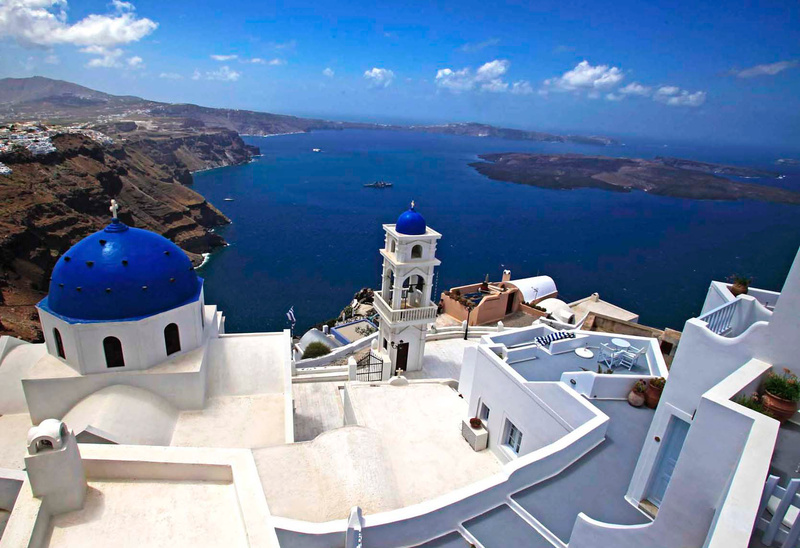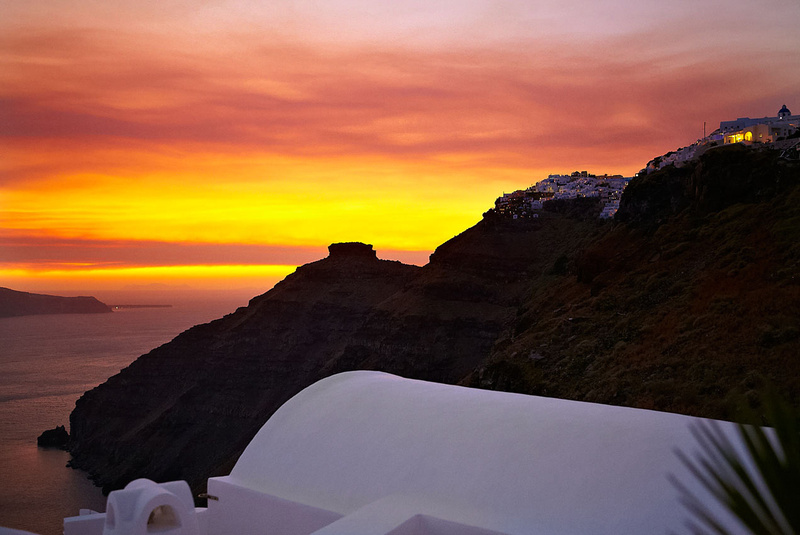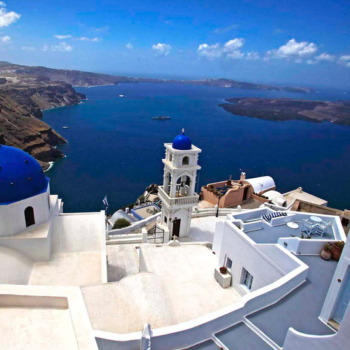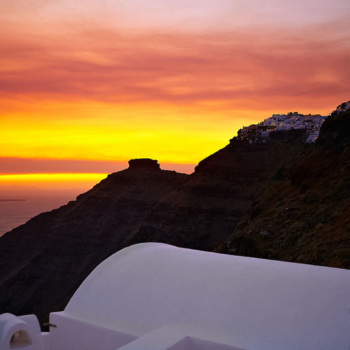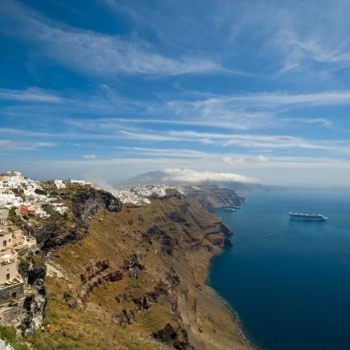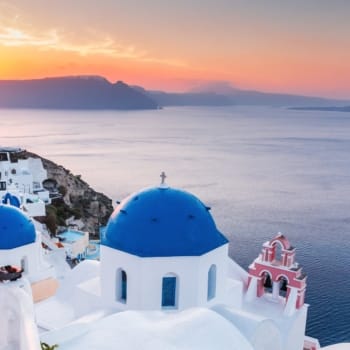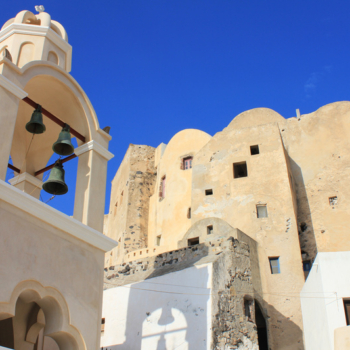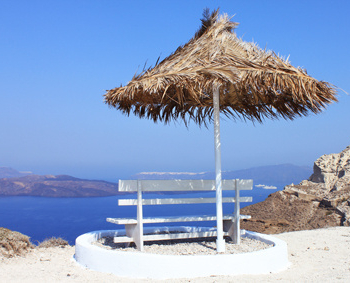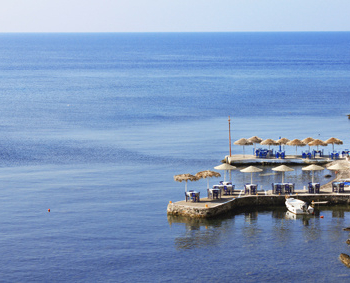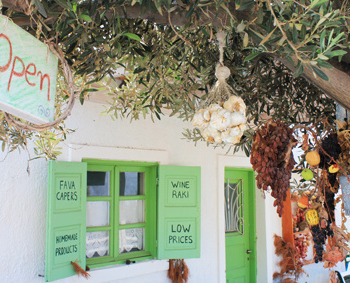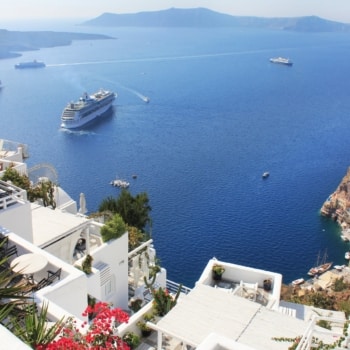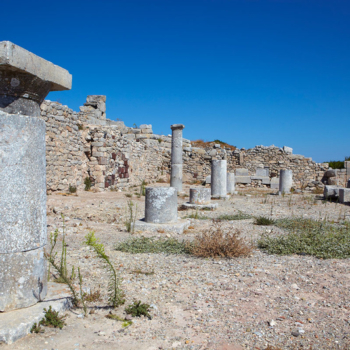Its name derives from the combination of the words ‘imera’ (day) and ‘vigla’ (observatory), based on the fact that it is located at the highest spot of Caldera offering quite breathtaking views. Imerovigli and Skaros, where the island’s medieval capital was established, demonstrate significant architectural interest while attracting – together with the rest of Caldera’s settlements – a large number of tourists. It hosts luxurious hotels, coffee shops, restaurants, mini markets, car rental offices, etc.
Some of the major sights of this settlement are the church of the Resurrection with its typical blue dome, the church of the Virgin Mary Maltese (Virgin Mary in the Temple) that was built in 1972 replacing the previous one and the church of St.George (1960) whose yard is an ideal place from which you can enjoy the magnificent view. Walking towards Firostefani, you will see the church of St. Nicholas.
SKAROS
The island’s medieval capital was built on top of an imposing cliff and it was an impregnable castle that was impossible to be reached from the seashore. Today there are only some ruins left, but the view from Skaros over Caldera is captivating, especially during the sunset. Skaros was deserted during the 18th century when its residents moved to Fira that was then established as the island’s capital. While walking towards the impressive cliffside, you can see the chapel of St.John Katifori that was rebuilt in 1966. In the west side of Skaros by the seaside you can see the chapel of Panagia Theoskepasti.
Info
The only clear image that exists of Skaros is a pencil drawing made by Thomas Hope which is exhibited at the Benaki Museum in Athens. The settlement’s fortress can be traced on top of the steep cliff. It used to be connected with the rest of the island via a wooden mobile bridge. The fortress was made of stone, its stucture was dense and its road network resembled a labyrinth.
